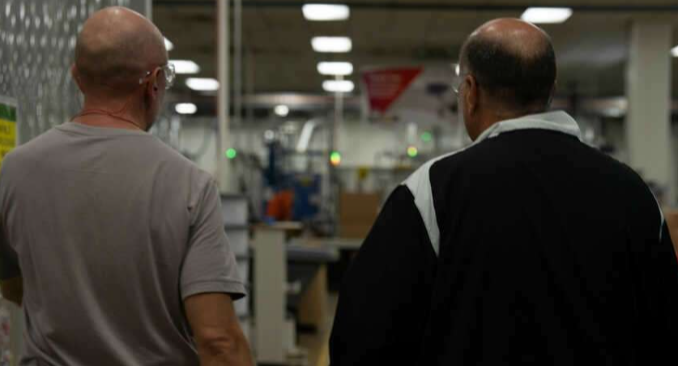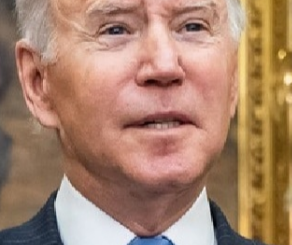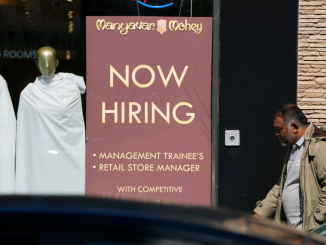
WAHPETON, N.D. — The newest residents of this small city on the Great Plains have come a long way to get here.
“Beautiful country, beautiful people,” Roman says in halting English. He doesn’t want to use his last name, because some of his family are still in Nikopol, Ukraine, just a few miles from Russian-occupied territory, and he fears he might endanger them.
“Right now, my city — every day, bomb,” Roman explains during a break from his job on the factory floor at ComDel Innovation, which makes medical devices and other precision equipment in the southeastern corner of North Dakota.
{snip}
“This climate is not necessarily for everyone,” Albrecht deadpans. But for ComDel, this is not a joke. If the company can’t find more employees, he says, it can’t keep growing.
“For the last three years, we have been in a position where customers have come to us and asked us if we would take on work,” Albrecht says. “And we’ve had to say no because of the ability to find people.
“The beginning of this year, we made a decision that, hey, we’ve got to do something,” he says.
That’s when ComDel started looking seriously into a program called Uniting For Ukraine, a legal pathway for Ukrainians to come to the U.S. and work for up to two years. So far, the company has hired about a dozen Ukrainians this way, Albrecht says, and has extended invitations to more than 40 others.
The U.S. immigrant population is growing fast in North Dakota and other states that are a long way from the southern border.
In North Dakota, the percentage of the population that was born outside the U.S. jumped more than 13% between 2021 and 2022, according to an analysis of Census Bureau estimates by William Frey, a demographer at the Brookings Institution, a center-left think tank in Washington, D.C. Frey notes that states such as West Virginia, Iowa, Indiana, Arkansas and Alabama also saw significant growth in their foreign-born populations over the same period.
{snip}
In North Dakota, the flow of immigrants is more of a steady trickle than a flood. But in a state with fewer than 780,000 residents, those numbers stand out.
The foreign-born population here is growing in a way it hasn’t in more than a century, as immigrants are pulled to North Dakota by employers desperate to fill jobs. Still, there’s deep-seated ambivalence about immigration in a state that remains overwhelmingly white, rural and conservative.
Employers say they’re desperate for more workers
There’s a labor shortage across much of the U.S., but in this part of the country, it’s extreme.
North Dakota’s unemployment rate is under 2%. It’s the same in South Dakota, while Montana and Wyoming are under 3%. That’s pushing businesses across North Dakota to recruit immigrants to fill open jobs in manufacturing, in oil production and in nursing.
“A lot of my friends are also in the U.S.,” says Roi Lubian, who recently immigrated from the Philippines. “And they say why? Why North Dakota? It’s so freaking cold.”
Lubian moved to Bismarck, the state capital, for a job at Sanford Medical Center. The hospital says it plans to hire about 200 Filipino nurses in all.
Despite the weather, Lubian says she likes the laid back pace of life in North Dakota. And she’s found a close-knit Filipino community in Bismarck that gets together for monthly potluck dinner parties. Still, living so far from her family sometimes feels lonely, Lubian admits during an interview at her sparsely furnished studio apartment a few blocks from the hospital.
{snip}
“For sure, my family, they are the reason why I’m here in North Dakota,” Lubian says. “There’s a lot of opportunities for you to secure your financial status. A lot of overtime. Pick up shifts.”
Immigration is “bringing in new folks that are really wanting to work,” says Brent Sanford, who until January was North Dakota’s lieutenant governor. Sanford now works for the state’s petroleum industry, trying to fill jobs in the Bakken oil fields in western North Dakota. He’s heading a project called Bakken GROW — short for Global Recruitment of Oilfield Workers.
“As hard as this is, it’s been easier to get 40 Ukrainian people here into these jobs than 40 people from you name the other state,” Sanford says.
North Dakota once had more immigrants than any other state
This isn’t the first time North Dakota has seen a sudden influx of immigrants. In the late 19th century and early 20th centuries, hundreds of thousands of Europeans settled across the state. Norwegians were the largest single ethnic group, though there was also a sizable contingent of Germans from an area that is now part of Ukraine.
In the 1900 census, North Dakota had the largest share of immigrants of any state in the country. At the time, more than a third of the state’s residents were born outside the U.S. Today, less than 5% of North Dakota’s population is foreign-born.
No one expects North Dakota to suddenly rival Florida, Texas or California as a magnet for new arrivals. But the state’s labor shortage is driving modest changes.
In April of this year, the Republican-led legislature and Gov. Doug Burgum created an Office of Legal Immigration, with the explicit goal of helping businesses in the state recruit foreign workers. The office is small — just two employees. But in a statement, Burgum said it will help to “alleviate our extreme workforce shortage, which remains North Dakota’s No. 1 barrier to economic growth.”
Still, the name of the office itself — with its clear emphasis on “legal” immigration — hints at how divisive the issue remains in North Dakota.
{snip}
Those concerns about immigration have occasionally erupted into moments of bitter disagreement.
An argument over refugee resettlement in Bismarck
For a little while in 2019, North Dakota was at the center of a nationwide debate about refugee resettlement.
The Trump administration had just empowered local communities to say no to accepting refugees. Although that policy was later struck down in court, it touched off an impassioned argument in Burleigh County, which includes Bismarck.
The city wasn’t a major destination for refugees. In 2019, it got only two dozen refugees. The state as a whole received 124 refugees that year — mostly from the Democratic Republic of the Congo, as well as smaller numbers from Afghanistan, Somalia and Sudan.
Still, hundreds of people showed up at a local school, debating for close to four hours.
Many of the speakers argued that the resources dedicated to refugees would be better spent caring for the homeless or other local groups in need. And some did not trust the local refugee resettlement agency to follow through on its commitments to help.
Supporters of refugee resettlement argued that the community could easily absorb a few dozen refugees and accused the other side of using arguments about fiscal responsibility to hide their racism and xenophobia.
Finally, the county commission voted 3-2 allowing resettlement to continue, though it capped the number of refugees at 25 for the year.
A lot of people were unhappy with that outcome, including Robert Field, a retired welder in Bismarck.
{snip}
“It wasn’t anything about trying to keep outsiders out,” Field says. “We just didn’t want people dumped here.”
Refugee advocates were at that meeting too, trying to defend the program.
“I felt really frustrated with what I was hearing from the people sitting around me,” says Leah Hargrove, executive director of the nonprofit Bismarck Global Neighbors, which helps new arrivals with integration. “You know just things that aren’t true. And they are not true anywhere in the U.S.”
For example, refugees do not get free cars. They are legal immigrants, who are extensively vetted before they come to the U.S. The federal government pays for some benefits, and most costs do not fall on the state or local community.
Still, Hargrove says she understands why there’s concern.
“It’s wild, just the amount of diversity we’ve seen in North Dakota rapidly,” Hargrove says. “I think it’s fair to acknowledge that there are increased costs, and increased things you have to figure out. That’s not different than the rest of the country is trying to figure out though. It’s just new for us.”
Changing attitudes in Fargo
Immigration is still relatively new in Bismarck. But refugee resettlement has been going on for decades in North Dakota’s largest city, Fargo. There’s been pushback there, too.
“We have people making obligations for the taxpayers of Fargo. That’s the bottom line,” City Commissioner Dave Piepkorn said in an interview with a local news outlet in 2021.
For years, Piepkorn has raised concerns about the costs of resettlement. In 2015, a petition at change.org drew thousands of signatures against continuing refugee resettlement in Fargo.
But refugee advocates say attitudes have shifted in Fargo — driven in part by more vocal support from employees in the area.
{snip}
“The voices of the progressive community and the congregations — those are always there. But when you have fervent voices at the Chamber of Commerce on your side,” Hannaher says, “it creates an entirely new dynamic.”
Multiple studies — including one commissioned by the City of Fargo — have shown that refugees are an economic plus for their host communities over the long run.
“Refugees are not a burden. They just looking for opportunity, just like anybody else,” says Nyamal Dei, who was elected to the Fargo Public Schools Board of Education in 2022. That makes her the first Black woman to be elected to public office in Fargo — and possibly anywhere in North Dakota.
Dei was born in what is now South Sudan, moved to Fargo for college 15 years ago and never left. She says attitudes about refugees in the city are changing.
“Once you get to know your neighbor, you get to know who they really are. You know, we want to make sure that we support our kids,” Dei says. “We want to see them succeed in life, just like any regular families in America. Or in the state of North Dakota in general. That’s how I look at it.”
Dei hopes the whole state will look at it that way, too. Because a lot more immigrants might be heading here, whether North Dakota is ready or not.
* Original Article:
https://www.npr.org/2023/10/25/1207238620/immigration-border-north-dakota-jobs-migrants


